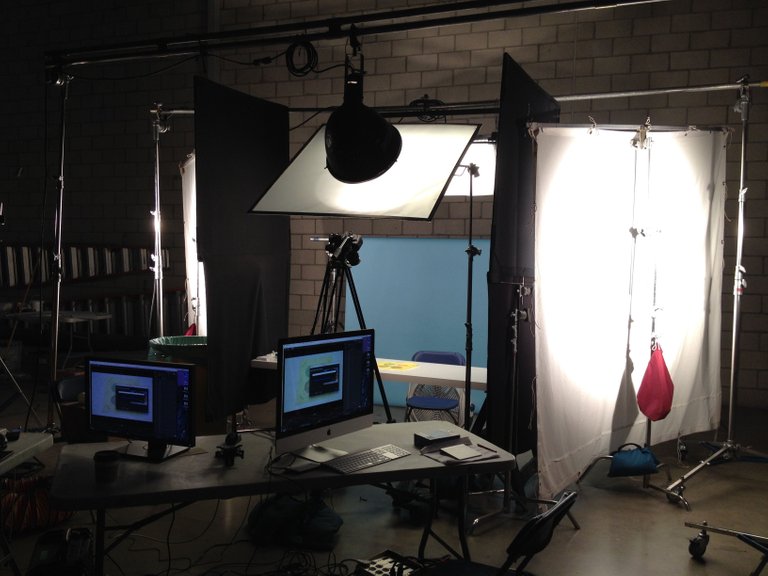Hey Steemer's! I wanted to share with you a commercial I animated for good ol' Mickey-D's a while back, and dive into the technique of "Pixelation," which is the art of animating people.
Here is some proof-of-concept footage I filmed before the actual shoot, which basically showed the director what I was aiming to achieve for the final product. We needed to make sure that the animation was going to be doable, so I shot these in my own studio to make sure that everything he wanted was possible.
These tests were done quickly just to get the idea across -- but the key word here is transitions. The director wanted burgers to turn into fries, fries to turn into cups, cups into sausage patties, you name it! The trick I had to wrap my head around was how to transition from object to object.
The trick lies within making the transition between two objects during a "big move." A big move can be described as an object that is moving quickly in frame, so the transition is hidden within the movement. Here is a gif of an object transformation being "hidden" during a move:

I transitioned between the burger boxes while they were spinning quickly, which doesn't allow the eye enough time to track the movement of the actual object. The viewer doesn't really have time to process what is actually happening in frame -- that's the illusion.
All other transitions involved me cutting items into sections to give the illusion that they were transforming...like this:

Yep. You guessed it. That is a cup that has been cut into pieces, to give the illusion that it is being pressed into a fry container. These gif's are slowed down slightly, so it's easier to see the effect.
These techniques are used all the time to help cheat things that would otherwise be impossible to do in the real world, such as pulling a large object out of someone's pocket.
I should mention that the actual act of animating a person is frustratingly difficult, as there isn't really a good way to keep them still. Animation relies on the ability to move/draw things frame-by-frame, so trying to get a living creature to be completely still and hold a slightly different position each and every frame is really hard. Watch the top of the frame and you can see the actor's throat "jitter" around because I just couldn't figure out a way to keep him from moving.
Here is the final commercial incorporating these techniques:
Here is the set, which was set up by a live action crew and then monitored for the entire 2 days it took for me to complete the animation. It always fascinates me how little live action crews understand about the animation process.

Hope you enjoyed this look into pixelation! Upvotes, resteem's and comments are always appreciated -- yada yada yada thanks for peepin! Happy to answer any questions you might have below.

Dude this is so cool! One of the best pixelation I have ever seen. And I know how it is challenging and time-consuming to do stop motion projects. Congrats!
Thanks man, I appreciate it! I try to make my posts as informative as possible, so I’m glad you enjoyed it. :D
This is so great!
:D
Great work! Thanks for your insight into the process!
Of course! Always happy to show how this stuff gets made. :D
I love "pixelation" I have done some of this but didn't know what it was called... ha!
A great illustration of the power of animation! :D
Thanks Derek! Pixelation is a fun process so it was fun to go a little bit deeper into showing that process.
Heard you in the curation lounge! Great stuff! Thanks for sharing the process of this! Very cool!
Thank you! Looking forward to catching you again in the lounge.
This is so amazing, glad you shared with us!
Thanks Danny, I appreciate it! :D Good talking with you earlier.
Wow. Thanks for sharing.
Thanks!
Great work and thanks for showing! It shows how much work is behind such a short scene! Animation is one of the art works I am fond of but
time is too short for me to go on with it. But that‘s why I enjoy and appreciate it so much.